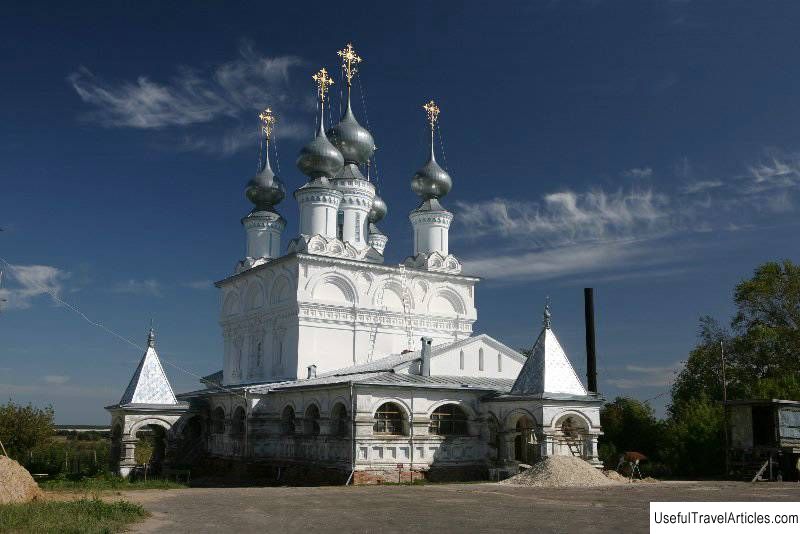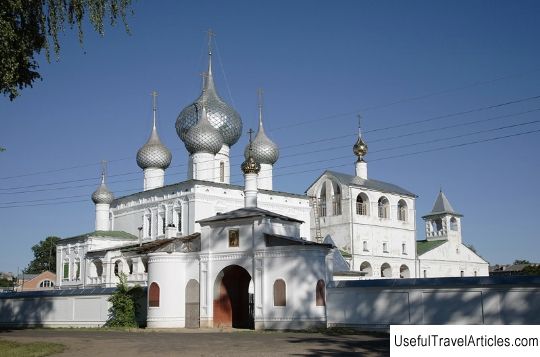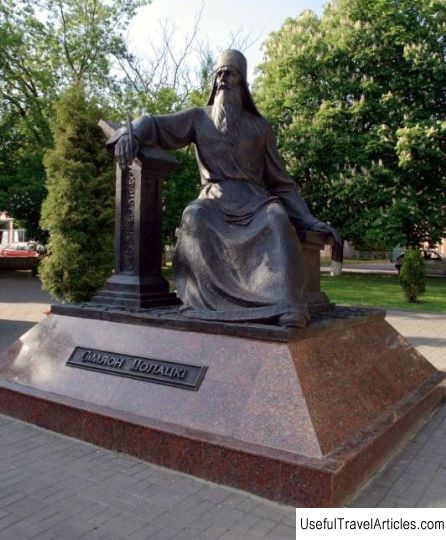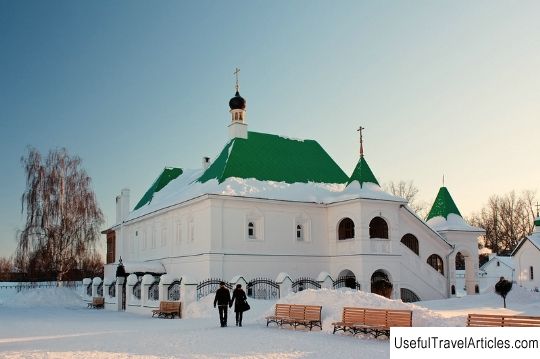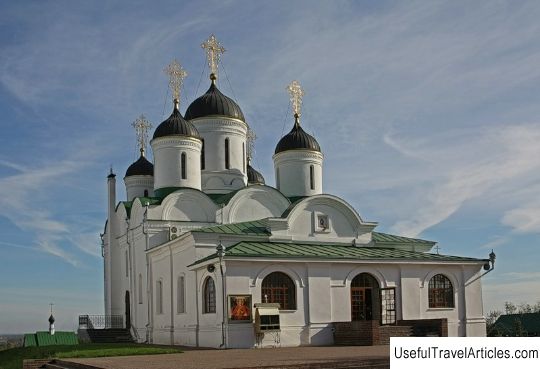Resurrection Monastery description and photos - Russia - Golden Ring: Murom
Rating: 8,1/10 (180 votes) 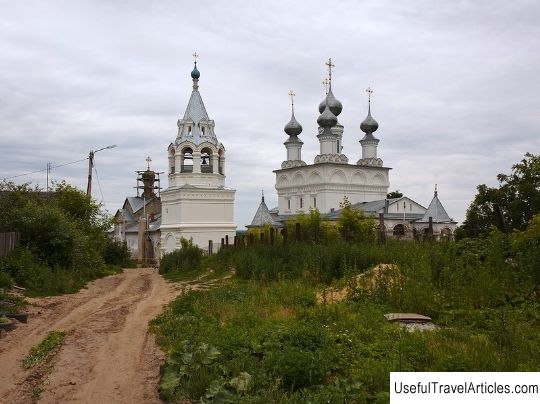
Resurrection Monastery description and photos - Russia - Golden Ring: Murom. Detailed information about the attraction. Description, photos and a map showing the nearest significant objects. Photo and descriptionThe Resurrection Orthodox Monastery operates in the northeastern side of the city of Murom at the Vladimir-Suzdal diocese. He is a feminine sociable. The monastery is located on Fruktova Gora, or rather in Yulsky Lane. If you believe the legends, then it arose at the site of the country palace of the great princes of Murom - Peter and Fevronia. The first chronicle information about the Resurrection Monastery dates back to the 17th century. To this day, the architectural monastic complex has survived, represented by buildings of the 17th century - the five-domed Resurrection Church, equipped with a refectory, as well as a bypass gallery with a single-domed gate of the Vvedenskaya Church, equipped with hipped porches and a bell tower. As for the earliest reliable information , concerning the Resurrection Church, they refer to 1566. It is known that in 1616 the murder of one of the priests named John was committed, although the first, chronicle descriptions refer to 1637. At first, the temple was wooden, located on a basement, was equipped with three tents, crowned with a dome and iron-studded crosses. The Resurrection Church had a rather impressive size. There were two chapels in it: St. Nicholas the Wonderworker and the Archangel Michael. According to some reports, at that time the church had thirteen icons, one large silver cross, two pewter vessels, as well as twenty-five handwritten and printed books. Not far from the Resurrection Church there was another one built of wood, Church of the Presentation of the Blessed Virgin Mary. The temple was warm after all, it housed a large oven, so even in winter it was possible to hold services here. Next to this temple was a wooden bell tower equipped with eight bells, the total weight of which reached 80 poods. Sixteen nuns lived in the monastery, and the elders-abbess Mariamna was at the head. The main occupation of the nuns was face sewing. The monastery was surrounded by a rather high fence. There was a cemetery not far from the monastery. It is important to note that the monastery was built on the money of a wealthy merchant named Cherkasov Semyon Fedorovich. According to the chronicle, in 1620, when priest John was killed, the monastery fell into desolation. After this tragic event, Maremyana received the right to maintain the monastery. In 1678, an inventory was carried out at the Resurrection Monastery, according to the results of which it was revealed that 26 old women and the main abbess lived at the monastery. A similar inventory was carried out in 1723 and was compiled by G. Korobov. At that time, 26 houses operated at the Resurrection Monastery. In 1764, the monastery ceased to exist. The abolition of the monastery was directly related to the order of Empress Catherine II, according to which the secularization of church land plots was carried out. After that, the Vvedenskaya and Voskresenskaya churches became exclusively parish. It is important to note that all the nuns were transferred to the Trinity Monastery. Between the 19th and early 20th centuries, churches remained at the level of regular city parishes. At this time in the Resurrection Cathedral there was a new carved iconostasis, as well as the royal gate, erected in 1835. There were two altarpieces, the main of which was consecrated in honor of the Entry into the Church of the Most Holy Theotokos, and the second - in the name of the Iberian Icon of the Mother of God. The existing iconostases in two aisles were also completely new. During the years of Soviet rule, the churches of the Resurrection Monastery were closed, and the most valuable things were transported to the museum; temple buildings began to be used as storage facilities. In 1929, the church cemetery was destroyed, and in 1950 a large football field was built over the graves. In 1998, the churches were returned to the Vladimir-Suzdal diocese.            We also recommend reading Church of Panagia Katefiani description and photos - Greece: Santorini Island (Thira) Topic: Resurrection Monastery description and photos - Russia - Golden Ring: Murom. |
